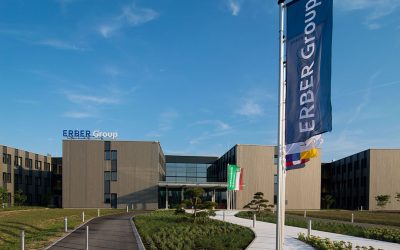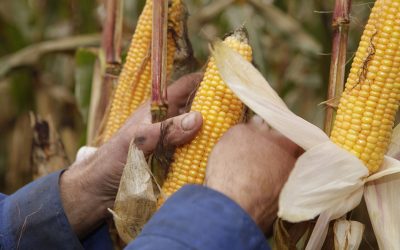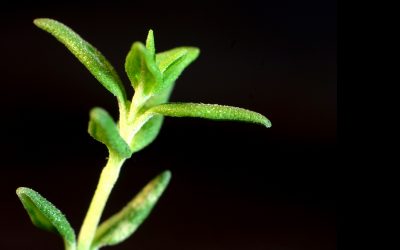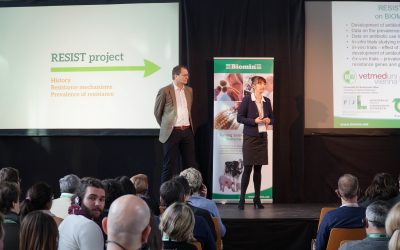DGGE to explore gut microflora

Knowledge on the gut microflora and i ts interact ions wi th feed is becoming more integrated in animal nutri t ion. Veri ty Ann Sat t ler, Viviana Klose and Tobias Steiner from Biomin explain how the DGGE technique can be a useful tool in this matter.
To study the effects of feed additives, such as probiotics and prebiotics,
on the microbial populations in the gut, several methods can be applied.
on the microbial populations in the gut, several methods can be applied.
Among microbiologists it is well known that with traditional culture
dependent methods only a small fraction of bacteria can be isolated and characterised due to limitations in selective enrichment.
characterised due to limitations in selective enrichment.
Microbial detection is improved by the use of nucleic acid based methodologies
that mostly target the 16S ribosomal RNA gene sequence, a sequence marking the
signature for bacterial groups (Woese, 1987). Denaturing gradient gel
electrophoresis (DGGE) of ribosomal DNA fragments is a promising fingerprinting
technique, applied to provide a pattern of genetic diversity of intestinal
microorganisms.
dependent methods only a small fraction of bacteria can be isolated and
Microbial detection is improved by the use of nucleic acid based methodologies
that mostly target the 16S ribosomal RNA gene sequence, a sequence marking the
signature for bacterial groups (Woese, 1987). Denaturing gradient gel
electrophoresis (DGGE) of ribosomal DNA fragments is a promising fingerprinting
technique, applied to provide a pattern of genetic diversity of intestinal
microorganisms.
By using DGGE, many samples can be processed simultaneously, making it a
powerful tool to monitor the development of bacterial community composition and
to measure possible changes in populations based upon dietary factors,
intestinal compartments or age.
powerful tool to monitor the development of bacterial community composition and
to measure possible changes in populations based upon dietary factors,
intestinal compartments or age.
DGGE fingerprinting
The 16S RNA gene sequence contains
regions which are conserved among all bacteria, but also regions which are
variable and can be highly species-specific. Comparing the 16S rDNA sequence
similarities therefore serves as identification and is consequently used to
analyse bacterial communities. In a polymerase chain reaction (PCR) the 16S rDNA
sequences from the bacterial community of a sample of gut content are amplified
and subsequently can be separated by DGGE. 16S ‘species’ can be distinguished by
this electrophoretic method, showing a pattern of bands, which represents the
composition of species in the original sample.
The 16S RNA gene sequence contains
regions which are conserved among all bacteria, but also regions which are
variable and can be highly species-specific. Comparing the 16S rDNA sequence
similarities therefore serves as identification and is consequently used to
analyse bacterial communities. In a polymerase chain reaction (PCR) the 16S rDNA
sequences from the bacterial community of a sample of gut content are amplified
and subsequently can be separated by DGGE. 16S ‘species’ can be distinguished by
this electrophoretic method, showing a pattern of bands, which represents the
composition of species in the original sample.
Therefore, this molecular methodology is also known as genetic
fingerprinting. As with every method molecular techniques are also afflicted
with biases and errors. The way of sampling, e.g. the choice of the sample
region in the gut (upper, lower ileum or colon) or the handling of the sample
under aerobic versus anaerobic conditions, can already have great influence on
the results. Furthermore, the extraction of nucleic acids from cells in the
sample may be biased due to inefficient cell lysis and removal of
contaminants,which may inhibit PCR amplification in subsequent analysing steps.
In general, DGGE will display the fragments from predominant species which
constitute at least 1% of the total community.
fingerprinting. As with every method molecular techniques are also afflicted
with biases and errors. The way of sampling, e.g. the choice of the sample
region in the gut (upper, lower ileum or colon) or the handling of the sample
under aerobic versus anaerobic conditions, can already have great influence on
the results. Furthermore, the extraction of nucleic acids from cells in the
sample may be biased due to inefficient cell lysis and removal of
contaminants,which may inhibit PCR amplification in subsequent analysing steps.
In general, DGGE will display the fragments from predominant species which
constitute at least 1% of the total community.
Sensitivity can be improved by the use of group- or species specific
primers, which have already been used for the amplification of the 16S ribosomal
DNA from Lactobacillus or Bifidobacteria. (Satokari et al., 2001; Heilig et al.,
2002). It should be made clear that species identification cannot be achieved
with DGGE. Therefore, the DNA fragments from one band of the gel should be
excised for subsequent cloning and sequencing of the PCR fragment. Besides all
limitations, DGGE is a very reliable, rapid and reproducible technique to study
a complex microflora.
primers, which have already been used for the amplification of the 16S ribosomal
DNA from Lactobacillus or Bifidobacteria. (Satokari et al., 2001; Heilig et al.,
2002). It should be made clear that species identification cannot be achieved
with DGGE. Therefore, the DNA fragments from one band of the gel should be
excised for subsequent cloning and sequencing of the PCR fragment. Besides all
limitations, DGGE is a very reliable, rapid and reproducible technique to study
a complex microflora.
Interpretation of DGGE fingerprints
To obtain an
objective interpretation of complex DGGE fingerprints, specialised computer
software programmes are used. Statistical analysis, cluster analysis or
diversity analysis can be achieved, depending on the question of interest. As
part of a current study, a feeding trial was designed to measure changes in
intestinal bacterial populations in response to probiotic and prebiotic
administration. Additionally, DGGE banding patterns of different gut
compartments (ileum and colon) were analyzed in order to see diversity changes
independent from feed quality. Therefore, eight pigs from the control feeding
group were sacrificed and content of ileum and colon was obtained to be further
prepared for DGGE analysis.
To obtain an
objective interpretation of complex DGGE fingerprints, specialised computer
software programmes are used. Statistical analysis, cluster analysis or
diversity analysis can be achieved, depending on the question of interest. As
part of a current study, a feeding trial was designed to measure changes in
intestinal bacterial populations in response to probiotic and prebiotic
administration. Additionally, DGGE banding patterns of different gut
compartments (ileum and colon) were analyzed in order to see diversity changes
independent from feed quality. Therefore, eight pigs from the control feeding
group were sacrificed and content of ileum and colon was obtained to be further
prepared for DGGE analysis.
The much higher bacterial
diversity in samples
collected from the colon in contrast to the ones collected from the ileum could
be revealed by means of the GelcompareII software (Applied Maths). The
complexity for a single sample can be expressed by diversity indices (e.g.
Shannon’s). With this diversity value, changes in bacterial community
composition based on differences in diet or age may be measured.
diversity in samples
collected from the colon in contrast to the ones collected from the ileum could
be revealed by means of the GelcompareII software (Applied Maths). The
complexity for a single sample can be expressed by diversity indices (e.g.
Shannon’s). With this diversity value, changes in bacterial community
composition based on differences in diet or age may be measured.
In another study (Konstantinov et. al. 2004) the bacterial community of
ileum and colon of weaning piglets were analysed in response to addition of four
different fermentable carbohydrates (inulin, lactulose, wheat starch, and sugar
beet pulp). Using DGGE, based on amplified 16S rRNA genes, a higher number of
bands in the colon than in the ileum, as well as a significantly higher
diversity in the colonic microflora of pigs fed the
fermentable-carbohydrate-enriched diet was observed. However, diversity and
community structure may also be influenced by the host genotype, which would
mean that the environment has less impact or is just less visible. Nevertheless,
this genetic linkage also has to be considered in future investigations.
ileum and colon of weaning piglets were analysed in response to addition of four
different fermentable carbohydrates (inulin, lactulose, wheat starch, and sugar
beet pulp). Using DGGE, based on amplified 16S rRNA genes, a higher number of
bands in the colon than in the ileum, as well as a significantly higher
diversity in the colonic microflora of pigs fed the
fermentable-carbohydrate-enriched diet was observed. However, diversity and
community structure may also be influenced by the host genotype, which would
mean that the environment has less impact or is just less visible. Nevertheless,
this genetic linkage also has to be considered in future investigations.
Source: Feed Mix Mix magazine. Volume 16.
No.1
No.1











